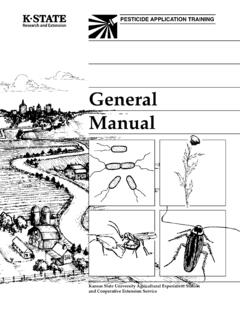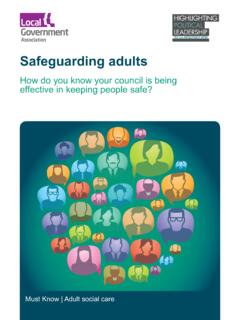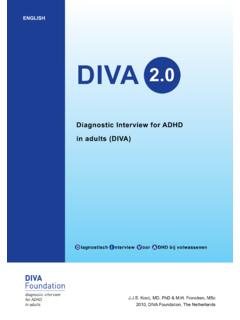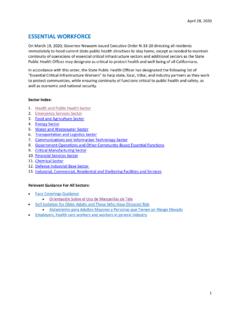Transcription of BASIC FAMILY COMMUNICATION
1 KANSAS STATE UNIVERSITY AGRICULTURAL EXPERIMENT STATION AND COOPERATIVE EXTENSION SERVICEBASIC FAMILY COMMUNICATIONA cknowledgmentsMaterial written and revised by:Charlotte Shoup Olsen, professor and extension specialist, FAMILY systems, Kansas State University and K-State Research and ExtensionContents34 Leader s Guide7 W arm up8 Activity 19 Activity 211 Activity 313 Activity 415 Activity 518 Evaluation28 Why FAMILY COMMUNICATION is Important30 Take Time to Listen32 How We Say it Makes a Difference34 The Impact of Unspoken Rules36 Handling Tough Times38 Having Fun TogetherESSENTIAL LIVING SKILLS BASIC FAMILY COMMUNICATION4 Essential Living Skills: BASIC FAMILY CommunicaitonComments/NotesLEADER S GUIDEPROGRAM DESCRIPTIONB asic FAMILY COMMUNICATION is designed for families who are seeking to improve everyday COMMUNICATION among FAMILY members.
2 This educational program emphasizes skill-building for improving FAMILY COMMUNICATION and interaction. It is NOT a replacement for families who need counseling or therapy to deal with their FAMILY goal of the program is to nurture in FAMILY members the capacity to engage in mindful COMMUNICATION with each other. Mindfulness refers to being fully present when communicating with each other and making COMMUNICATION decisions that take into consideration the needs and circumstances of each FAMILY member (Smith, 1999).OBJECTIVESP articipants will learn: How FAMILY COMMUNICATION affects FAMILY relations. Effective ways to listen to other FAMILY members. Respectful ways to express themselves.
3 The impact of unspoken FAMILY rules. How to handle difficult issues. The benefits of having fun DESIGNThe following six BASIC concepts are used to describe FAMILY COMMUNICATION : Why FAMILY COMMUNICATION Is Important Take Time to Listen How We Say It Makes a Big Difference The Impact of Unspoken Rules Handling Tough Times Having Fun TogetherEach COMMUNICATION concept, available on a separate fact sheet, can be copied for persons inquiring about a specific issue. These fact sheets give a brief explanation of the concept followed by examples and skill-building ideas for improving FAMILY Living Skills: BASIC FAMILY CommunicationComments/NotesWhen planning a FAMILY COMMUNICATION workshop, this leader guide gives a suggested format for a two-hour session that provides an overview of all the information.
4 If you have less time to conduct the workshop or want to focus on particular concepts most suited to a given audience, decide which group activities can be deleted. You may also wish to have a series of workshops, using one activity per OF THE GROUP LEADERE ffective leaders will approach this workshop both as a teacher and a learner. Smith (1999) indicates that a teacher provides quality information, but also learns from the participants. The teacher continually asks: What do the participants know? How have they used this knowledge? What other concepts are they identifying?Smith (1999) also talks about process versus content: Program resources provide content.
5 However, the process the discussion that occurs, the listening and encouragement, responding to questions, laughing and taking chances is important, too. How the session is organized and how it evolves is an extremely important part of the educational experience. A content-rich program that is lifeless and rigid will not be very successful (p. 19). TARGET AUDIENCEThe program resources are written for adults and older adolescent youth. The size of a workshop group should be between 6 and 18 participants. A smaller group can evolve into a counseling-type session, which might lead to difficult situations for the group leader. This information is intended for presentation in an educational format only.
6 Having a group with more than 18 participants has a tendency to limit group discussion STARTINGThis workshop will go smoother if you: Carefully review this leader s guide and each of the fact sheets. Decide which of the activities and fact sheets you will use. Prepare yourself for each activity by thinking about participant reactions and your responses. Make copies of the selected fact sheets and evaluation forms for each participant. Assemble supplies, if Living Skills: BASIC FAMILY CommunicaitonComments/NotesWORKSHOP PRESENTATIONThe workshop format is built upon the Experiential Learning Model (McFarland, et al., 1999). The steps modified for this workshop are:1.
7 Start with an introductory warm-up Have the group set ground Explain a concept in your own words, using information on the fact Introduce an activity for the participants to Share reactions and observations, reflecting on what Generalize to discover what was learned and how it connects to real Suggest to participants to apply what was learned in the FAMILY steps 3 to 7 for each workshop FAMILY COMMUNICATIONKANSAS STATE UNIVERSITY AGRICULTURAL EXPERIMENT STATION AND COOPERATIVE EXTENSION SERVICEWARM UPSuggested warm-up (approximately 10 minutes)Purpose: To help participants feel comfortable in the : Paper and markersAsk participants to draw stick figures of their FAMILY .
8 Then ask them to introduce themselves to the group and briefly describe who is in their drawing. Complete this activity by asking what they hope to learn during the workshop to address FAMILY COMMUNICATION a quick overview of the program s key COMMUNICATION concepts. Help the participants understand that today s goal is to put into action what we know and understand about FAMILY COMMUNICATION . The workshop is to reinforce skills that keep COMMUNICATION open and respectful, and builds FAMILY ground rules (approximately 5 minutes)Purpose: To determine group expectations regarding behaviors that foster comfortable and positive social interaction within the : Flip chart or white board and markerYou might want to have several ground rules listed.
9 Examples are: one person talks at a time, no put-downs, voluntary participation, confidentiality, etc. Ask the group to suggest other ground rules. Ask the group if everyone agrees with each of the rules. If someone voices an objection to a rule, have that person explain why, paraphrase the message, and ask group approval for deleting it. Post the ground rules so they are visible throughout the FAMILY COMMUNICATIONKANSAS STATE UNIVERSITY AGRICULTURAL EXPERIMENT STATION AND COOPERATIVE EXTENSION SERVICE(approximately 20 minutes)Purpose: To understand how COMMUNICATION is the key to building FAMILY : Flip chart or white board and markerUse your own words to explain Why FAMILY COMMUNICATION Is Important fact sheet.
10 Emphasize that COMMUNICATION is the key to building or hindering relationships among FAMILY members. Use your own FAMILY picture from the warm-up activity to illustrate how many FAMILY relations exist within any FAMILY unit. For example, if there are four persons in your FAMILY , there are six one-on-one relations. Each relationship has its own COMMUNICATION pattern. Help the group to recognize that these relationships and COMMUNICATION patterns become more complicated with stepparents, grandparents, and other FAMILY members who are important to the FAMILY the group to think about a specific time when they were satisfied with their FAMILY COMMUNICATION . It could be a specific incident or a longer period of time.













